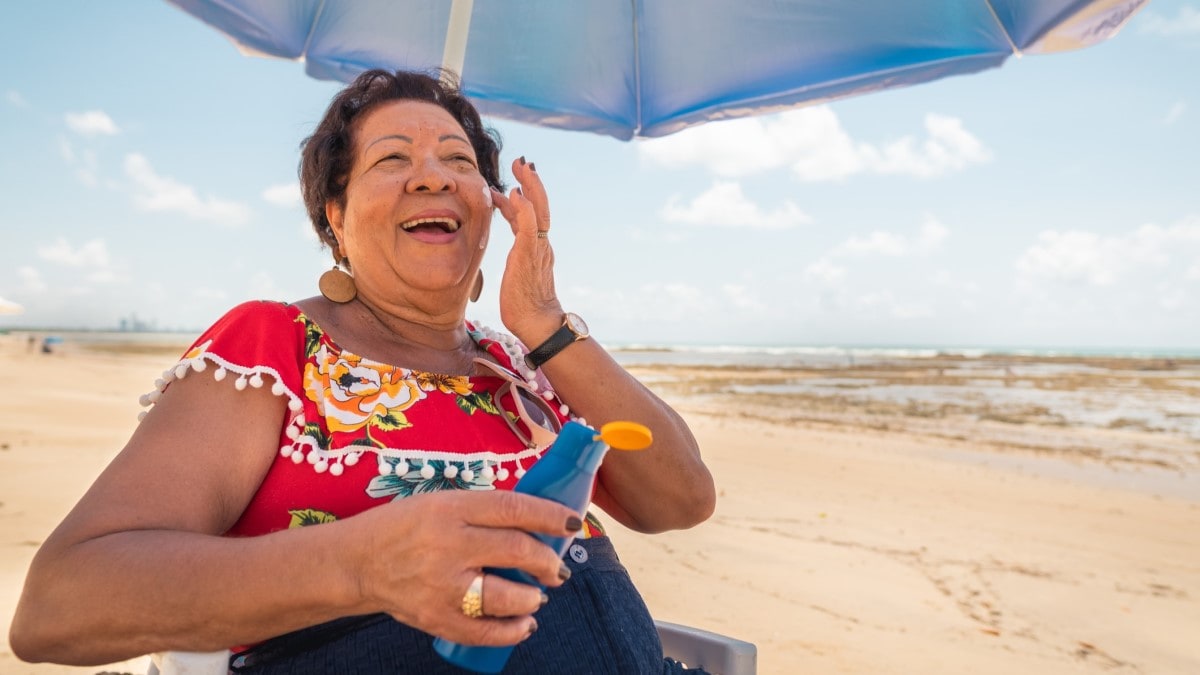What to know
Less than half of older adults protect their skin from the sun when outside for an hour or more. This may raise their risk of getting skin cancer.
Background

Each year in the United States, more than 5 million people are treated for skin cancer at a cost of about $8.1 billion. Most cases of skin cancer are found in people older than 65 years of age, but little attention has been given to ways to reduce skin cancer risk among people in this age group. Because older adults are living longer, the need for public health efforts to promote life-long skin health is more critical than ever.
A major risk factor for most skin cancers is too much exposure to the sun's ultraviolet (UV) rays. Making sun protection an everyday habit can help prevent sunburns and lower a person's chances of getting skin cancer.
In a study, CDC researchers used responses to questions in the 2015 National Health Interview Survey to find out how often older adults in the United States do each the following when outside in the sun.
- Stay in the shade.
- Use sunscreen.
- Wear a wide-brimmed hat.
- Wear clothing to the ankles.
- Wear a long-sleeved shirt.
Survey participants were asked how often they used each kind of sun protection when spending at least 1 hour outdoors on a warm, sunny day. Participants were also asked how many times they had been sunburned in the past 12 months.
Additionally, participants were asked how their skin reacts to sun exposure. Participants were considered "sun-sensitive" if they said their skin would get sunburned after being in the sun for an hour without sun protection.
Key findings
- Only about 15% of older adults and 8% of sun-sensitive older adults regularly used all 5 kinds of sun protection.
- The most popular kinds of sun protection among older men were wearing clothing to the ankles, such as pants (44%) and staying in the shade (37%).
- The most popular kinds of sun protection among older women were staying in the shade (47%) and using sunscreen (32%).
- Nearly 18% of older adults and 15% of sun-sensitive older adults said they didn't use any kind of sun protection regularly.
- More than 1 in 10 older adults (13%) had been sunburned in the past year, and sunburn was nearly twice as high among sun-sensitive older adults (20%).
- Although sunburn was most often reported among non-Hispanic White older adults, sunburn was reported among all racial and ethnic groups in the study, including Black and Hispanic older adults.
Why this matters
People who reach the age of 65 can expect to live, on average, 2 more decades. This means that efforts to improve the use of sun protection and reduce sunburn among older adults would likely help to reduce skin cancer risk in later decades of life. More research can help us to understand the best ways to promote and support sun safety among older adults. Communities can continue making sun protection options easily accessible to older adults by increasing shade in outdoor public spaces.
Data citation
Holman DM, Ding H, Freeman M, Shoemaker ML. Association between sun protection behaviors and sunburn among U.S. older adults. Gerontologist. 2019;59(suppl 1):S17–S27.
